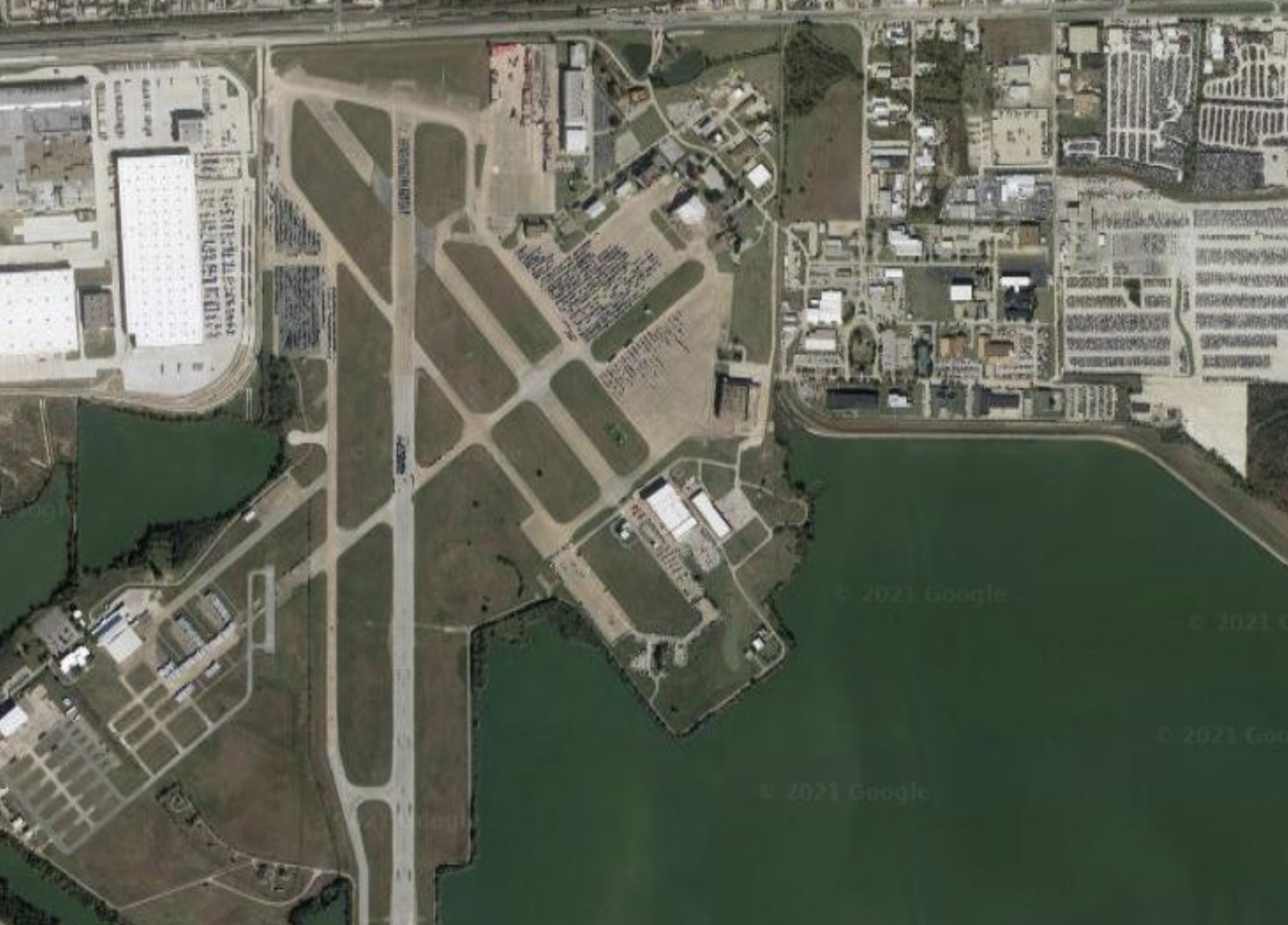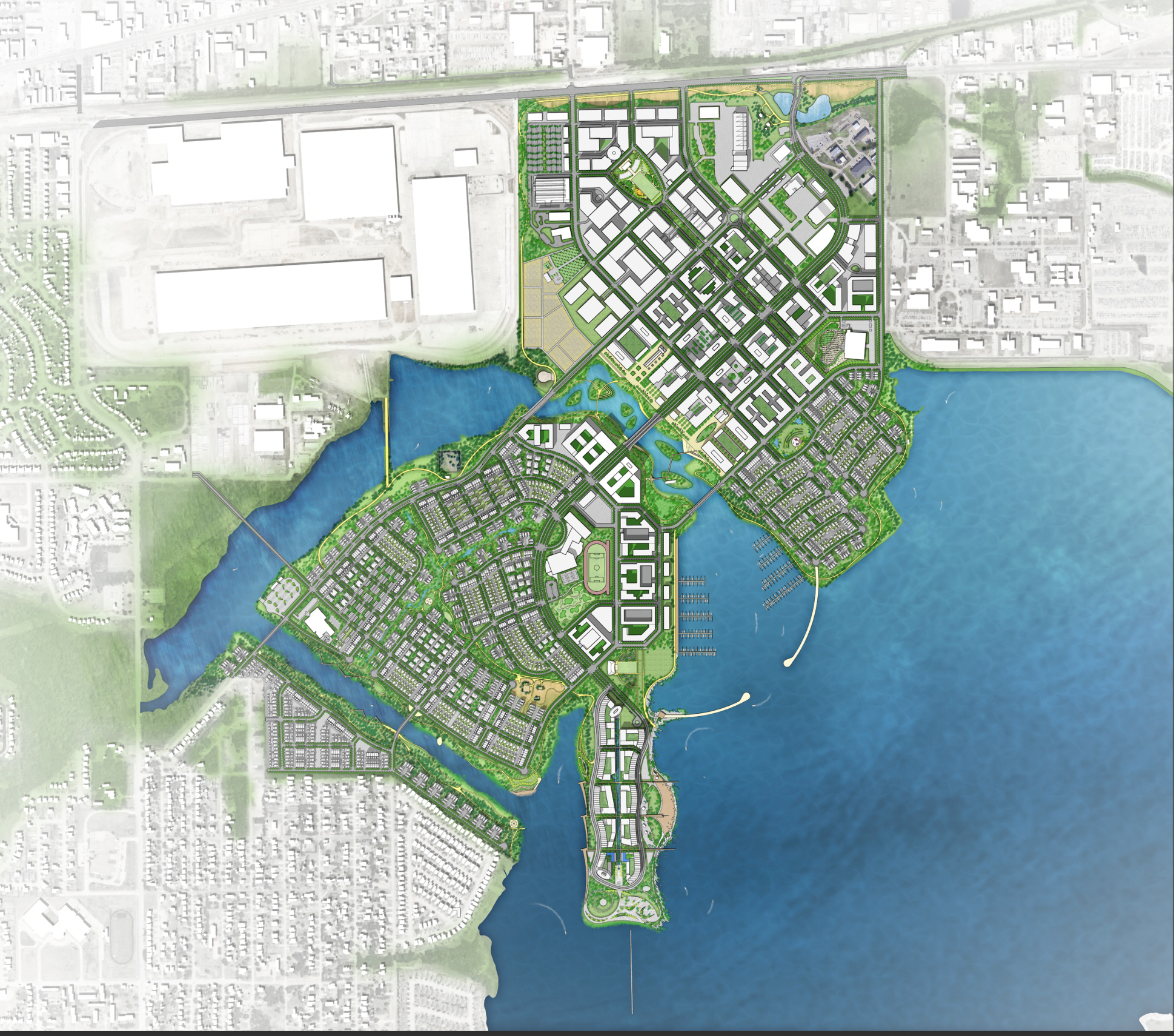Hensley Field, 738 acres near the city’s western border with Grand Prairie, has for more than two decades been where the city puts the things it does not know what to do with. It’s housed over a thousand old police cars, a dog whose owner was infected with Ebola, and the old statue of Robert E. Lee that was removed from Oak Lawn Park.
On Thursday, the City Plan Commission will be briefed on a master plan for Hensley Field that was developed by city staff and Austin-based McCann Adams Studio. The latter was hired by the city to plot the area’s mixed use future; it previously transformed Austin’s former Robert Mueller Municipal Airport into a 700-acre community development.
The city of Dallas has wanted to develop the land since the Base Closure and Realignment Act of 1990 formally ended all U.S. Navy operations there. Today, Hensley Field falls in a designated Opportunity Zone, part of a federal program that offers tax incentives to developers in working in specific neighborhoods identified by the state.
The draft master plan is 59 pages of ambitious goal setting for a lot of land that may still have a lot of secrets. The Navy’s operation left toxic waste in the soil that must be remediated. It was once home to indigenous tribes like the Caddo, Comanche, Cherokee and Wichita, and the city’s re-use and redevelopment plan discusses the potential for discovering artifacts related to those Native Americans. There are also historic structures and a historic cemetery on the site.
It’s an ambitious draft plan that envisions a whole new neighborhood sprouting from nothing.
It calls for a walkable, mixed use community with 6,800 residential units, interconnected networks of open spaces, and a strong orientation to Mountain Creek Lake that would include a marina and waterfront trails. It would also link to transit options that do not currently exist and would offer a “40-acre Innovation Village on the Runway Peninsula” that would embrace the use of renewable energy sources and sustainability best practices.
In a September 19 memo from McCann Adams to city staff, a list of edits and additions to the final Hensley Field Master Plan give a further glimpse into what that presentation to the CPC will look like, including references to the city’s recently-adopted Racial Equity Plan.
At least 20 percent of all units will be priced for purchase for households earning 80 percent of the adjusted median income or below or for rent for households earning 60 percent of the adjusted median income. An additional 10 percent of all homes will be targeted for those earning between 81 and 120 percent of AMI.
The memo also discusses the process the city will follow to select a master developer, but that will likely not come up in the CPC briefing, since that body is only responsible for land use and zoning.
The city’s hopes for development have always run up against one big thing: The land was contaminated by toxic waste, including lead, chlorinated volatile organic compounds, pesticides, petroleum hydrocarbons, and per- and polyfluroalkyl substances, or PFAS, which is left behind by firefighting foam and was found in the soil and groundwater at Hensley Field.
In 2017, former Assistant City Manager Jill Jordan warned the City Council that the Navy was woefully behind and would likely need an extension of its 15-year deadline, which was up in 2017.
According to the city’s more recent re-use and redevelopment plan for Hensley Field, some of those contaminants have been remediated to the satisfaction of the Texas Commission on Environmental Quality. Others, like those PFAs, are still a work-in-progress.
“The Texas Commission on Environmental Quality has cleared the site for all of the other contaminants,” Jim Adams of McCann Adams told D last year. “It has not cleared it for PFAS because the science is still not settled on how this chemical is to be mitigated, and we have not yet seen exactly where it is relative to the soil and groundwater.”
The city sued the Navy in 2002 to get the federal government to clean up its mess. A report earlier this year from the U.S. House of Representatives Committee on Appropriations also took the Navy to task.
“The committee is concerned that 23 years after the closure of Naval Air Station Dallas (Hensley Field) in BRAC in 1998, the Department of the Navy has not yet completed environmental remediation of the former Naval Air Station Dallas,” the report said.
Two years ago when the city hired McCann Adams, Councilman Casey Thomas called the development a “historical opportunity.” His southern Dallas colleague on the horseshoe, Tennell Atkins, also saw the promise, even before a master plan was produced.
“This is going to spur our tax value, with employees, with jobs. But we’ve got to make sure we stay focused,” he said.
If the Navy and the city can ensure that the site is cleaned up and is safe, it will be something Dallas doesn’t have a lot of: brand new housing in a new community.
Get the D Brief Newsletter
Author







